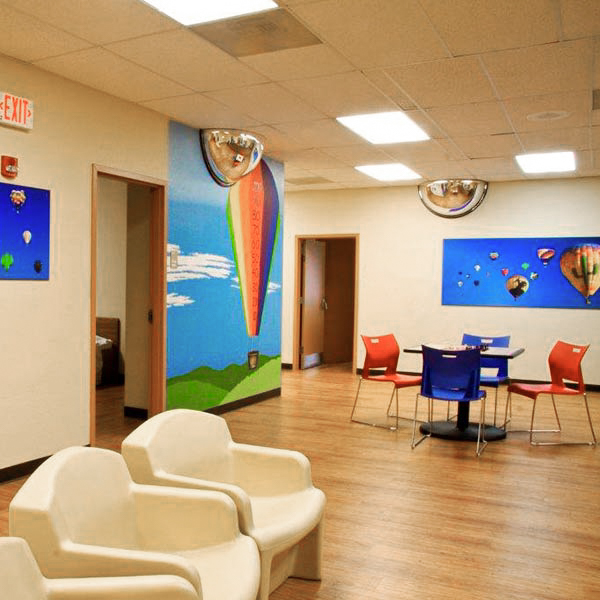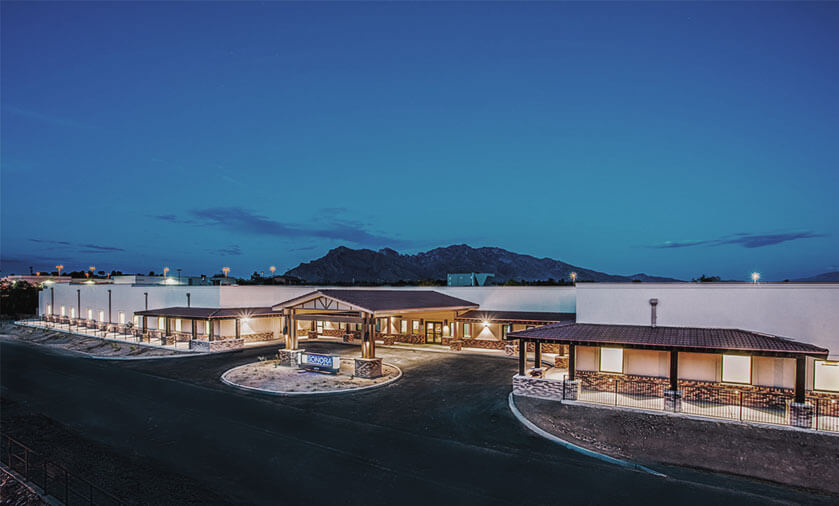Distinguished by extreme changes in a person’s mood that can range from manic to depressive, bipolar disorder affects millions of people every day.
Understanding Bipolar Disorder
Learn More About Bipolar Disorder
With varying levels of severity, the symptoms of this mental health condition are known to cause a great deal of impairment and disruption should an individual not seek treatment. The severity levels of this mental illness are separated into three distinct types:
Bipolar I is the most severe type of bipolar disorder. Marked by manic episodes in which a person’s mood is elevated, this type can cause impulsive behaviors that often lead to damaging and detrimental consequences. Additionally, bipolar I involves episodes of depression. What is important to know about this type is that a person will oscillate between episodes of mania and extreme depression.
Bipolar II involves more severe episodes of depression and at least one hypomanic episode at some point. The distinction between bipolar I and II is that bipolar II’s hypomanic episodes often do not cause as much disruption in functioning as the manic episodes associated with bipolar I disorder.
Cyclothymia involves pervasive mood disturbances. This is the least severe form of bipolar disorder, though episodes of elevated mood and depression are still common.
Treatment for all three types of bipolar disorder is available and can offer relief from disruptive and impairing symptoms associated with this mental illness. For those afflicted with this condition, it is crucial to know that recovery is possible.
Statistics
Statistics of Bipolar Disorder
With 25 being the average age of onset, it is estimated that six million adults meet criteria for bipolar disorder. Moreover, researchers are realizing that more and more children and adolescents are displaying signs and symptoms of bipolar disorder. This new finding infers that there are even more people who suffer from bipolar symptoms at varying ages, though more investigation into this realization needs to be done as it has not been yet officially concluded to be correct.
Causes and Risks
Causes and Risk Factors of Bipolar Disorder
Like other mental illnesses, bipolar disorder’s causes are not isolated to a specific, dependent variable. Experts believe that a number of causes and risk factors contribute to an eventual diagnosis for the condition. The following explanations are widely accepted among experts and can explain both how and why a person develops bipolar disorder:
Genetic: Assessing an individual’s family history can reveal a predisposition to bipolar disorder. Those with a first-degree relative with bipolar disorder are at an increased risk of developing this mental illness. In fact, research has found that people with a genetic link to bipolar disorder have a 15-25% greater chance of displaying signs and symptoms at some point.
Physical: Individuals with bipolar disorder often have an imbalance in important brain chemicals that regulate mood and emotions. When this imbalance occurs, symptoms of bipolar disorder are frequently the result.
Environmental: Experts believe that exposure to certain things or spending time in certain kinds of environments are known to trigger bipolar disorder. Chronic stress, exposure to trauma and violence, and unexpected life changes are some examples of how an individual’s environment can trigger symptoms of bipolar disorder. These adverse environmental experiences can also lead to an imbalance in mood-regulating chemicals in the brain, which can also bring bipolar symptoms to the surface in those with a family history of the disorder. Lastly, drug use and abuse can awaken a dormant bipolar disorder in those who are genetically predisposed to the illness.
Risk Factors:
- Exposure to chronic stress
- Family history of bipolar disorder
- Family history of another mental illness
- History of exposure to trauma / abuse / neglect
- Substance use / abuse / dependence
Signs and Symptoms
Signs and Symptoms of Bipolar Disorder
The signs and symptoms of bipolar disorder can vary depending on the type of bipolar disorder diagnosed in a person. The following signs and symptoms are commonly associated with bipolar disorder, however they all may or may not be present:
Behavioral symptoms (depressive episode):
- Poor school or work performance
- Isolation from family and friends
- Self –injury
- Suicide attempts
Behavioral symptoms (manic episode):
- Hypersexuality
- Behaving as though one’s abilities are more exceptional than others
- Increased aggression
- Rapid speech
- Inability to remain focused in conversation
- Poor impulse control
- Inability to multitask
Physical symptoms (depressive episode):
- Requiring a lot or very little sleep
- Decreased energy
- Overeating or not eating enough
- Weight gain or loss
Physical symptoms (manic episode):
- Decrease in appetite
- Insomnia
- Fluctuations in body temperature
- Restlessness
Cognitive symptoms (depressive episode):
- Lack of concentration
- Inability to make good decisions
- Decelerated thinking
- Presence of hallucinations
Cognitive symptoms (manic episode):
- Lack of focus
- Poor concentration
- Racing thoughts
Psychosocial symptoms (depressive episode):
- Feelings of worthlessness
- Feelings of guilt
- Declined interest in pleasurable activities
- Increased worry
- Low self-esteem
- Suicidal ideations
Psychosocial symptoms (manic episode):
- Increased excitability
- Grandiose feelings
- Irritability
- Agitation
- Feeling invincible
Effects
Effects of Bipolar Disorder
Untreated bipolar disorder can render several debilitating effects over time. While the number of effects that occur can vary depending on the person, the possibility remains that the following effects can adversely impact a person’s life:
- Interaction with the legal system
- Financial strife
- Decrease in quantity and/or quality of interpersonal relationships
- Inability to maintain employment
- Academic failure
- Substance use
- Self-injury
- Suicide attempts or completion
Co-Occurring Disorders
Bipolar Disorder & Co-Occurring Disorders
Because the symptoms of bipolar disorder overlap symptoms found in other disorders, there is a high likelihood that someone can be diagnosed with another mental illness at the same time as bipolar disorder. Below are the disorders that care commonly diagnosed in addition to bipolar disorder:
- Attention deficit/hyperactivity disorder
- Anxiety disorders
- Panic disorder
- Specific phobias
- Obsessive-compulsive disorder
- Posttraumatic stress disorder
- Substance use disorders














